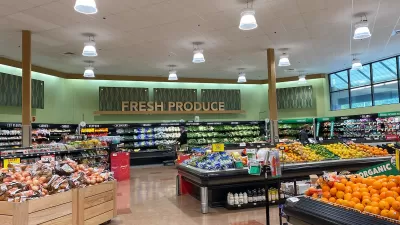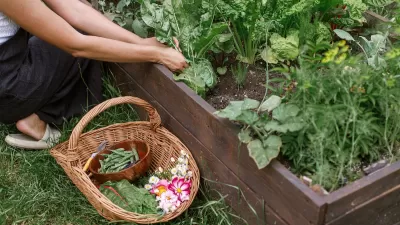A map of Pittsburgh's food deserts illustrates a nationwide problem with food insecurity.

Access to food and the role it can play in a person's life is an absolute vehicle for transformation and integration,” says Christina French, publisher of Table magazine.
In a country of agricultural bounty, it can be difficult to understand how so many people can lack for food. But 15 million American children are food-insecure. In Pittsburgh, 47 percent of the city reportedly lives in one of many food deserts. The problem becomes even more dire when we break down what constitutes "food." In many neighborhoods, the only source of "food" within walking distance is the corner store, markets that typically sell packaged junk food, sodas, and beer.
Reporting for the Pittsburgh Post-Gazette, Melissa McCart offers an explanation for how food desserts have come to be. High labor costs, economic downturn, and competition from big-box superstores such as Walmart have caused many grocery stores to close and consolidate. Residents of affected neighborhoods report travelling more than an hour by bus to reach a proper grocery store. Some of these neighborhoods, such as Oakland, home to the University of Pittsburgh, have streets filled with restaurants and bars, but such options are neither healthy nor affordable.
"Pittsburgh groups have been ramping up their efforts to address food insecurity, with varying degrees of success," reports McCart. Food pantries are expanding as well as focusing more on nutritional education. The Just Harvest program provides credits for EBT users to buy produce at farmers markets. Grow Pittsburgh is initiating community garden projects. Youth Places teaches food literacy to young restaurant workers.
"When people are hungry, the city suffers," McCart points out. "Charities have more to do."
FULL STORY: Food Deserts

Alabama: Trump Terminates Settlements for Black Communities Harmed By Raw Sewage
Trump deemed the landmark civil rights agreement “illegal DEI and environmental justice policy.”

Planetizen Federal Action Tracker
A weekly monitor of how Trump’s orders and actions are impacting planners and planning in America.

Why Should We Subsidize Public Transportation?
Many public transit agencies face financial stress due to rising costs, declining fare revenue, and declining subsidies. Transit advocates must provide a strong business case for increasing public transit funding.

Understanding Road Diets
An explainer from Momentum highlights the advantages of reducing vehicle lanes in favor of more bike, transit, and pedestrian infrastructure.

New California Law Regulates Warehouse Pollution
A new law tightens building and emissions regulations for large distribution warehouses to mitigate air pollution and traffic in surrounding communities.

Phoenix Announces Opening Date for Light Rail Extension
The South Central extension will connect South Phoenix to downtown and other major hubs starting on June 7.
Urban Design for Planners 1: Software Tools
This six-course series explores essential urban design concepts using open source software and equips planners with the tools they need to participate fully in the urban design process.
Planning for Universal Design
Learn the tools for implementing Universal Design in planning regulations.
Caltrans
Smith Gee Studio
Institute for Housing and Urban Development Studies (IHS)
City of Grandview
Harvard GSD Executive Education
Toledo-Lucas County Plan Commissions
Salt Lake City
NYU Wagner Graduate School of Public Service





























